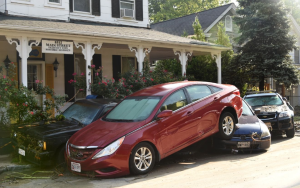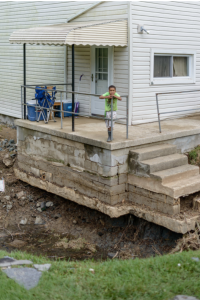
Ellicott City Flood Solutions (ECFS) seeks flood solutions that serve heritage residences in a historic mill town, with focus on safety and vitality of historically marginalized community members. Still-resilient structures are under a triple threat from the financial lure of redevelopment, historic neglect of infrastructure, and increased rain intensity. Main Street, which slopes steeply toward the Patapsco River, was once rich with vegetation, floodplain soil, and granite walls that slowed runoff flow. But 7.7 inches of rain in one storm in 2011 sent torrents of water around residences well above the river, causing road failures, compromising stormwater management channels, and exposing utilities. Tree removal and development has compromised historic communities since, as evident in 2016 and 2018 when flooded Ellicott City made headlines. ECFS is dedicated to green infrastructure, responsible development, and community-government engagements that work for a safe, resilient future.

source: Gayle Killen
As homeowners recovered after the 2011 flood, redevelopment threatened to displace longtime residents of the historic free-Black Hilltop and Fels Lane communities and add even more runoff to the area. ECFS’s founders began with door-to-door conversations and neighborhood meetings. Connecting with the Center for Watershed Protection and later partnering with Thriving Earth Exchange added scientific expertise to grassroots determination. Today the community also engages in a Facebook group 2200 members strong. Members actively upload real-time local storm photos, meeting notices, petitions, and development plans affecting their area of the subwatershed. The small town suffers from localized neglect, but ECFS is a persistent voice for improvement. As Lori Lilly, manager of the Center for Watershed Protection project, has pointed out, ECFS “is here to stay, like GD Styrofoam.”

Camari and the sinkhole July 2016